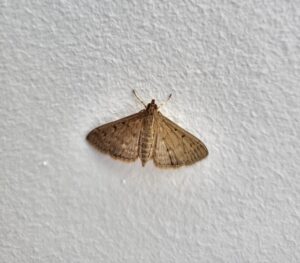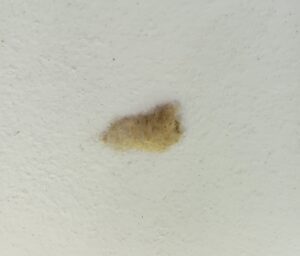As we lead into winter and the seasonal rains wet the ground, Armyworm breeding season is here. Armyworm are a pest of grass pastures and household lawns. The caterpillar causes significant damage that can devastate household and commercial lawned areas, while the adult (moth) lays unsightly eggs on eaves, outdoor walls and furnishings.
What to look for?
There are a number of early infestation signs to keep an eye out for.
- Active moths – The moths can be seen flying off the lawn, resting on walls or laying eggs on house eaves.
- Eggs – The eggs are laid in batches, often on house eaves, outdoor walls and furnishings. The eggs appear as a small (5c coin sized) furry, brown/beige clump.
- Browning lawn – Because the caterpillars are vegetive feeders, you’ll notice minor lawn damage that will progress quickly. It will look like brown, circular shaped dying patches that will quickly expand outwards. To confirm armyworm as the culprit, you can use a bucket of water and dish soap mix to quickly bring the caterpillar to the surface.


Can you prevent Armyworm infestations?
The short answer is yes. While care in application should be taken to avoid overdosing, or encouraging insecticide resistance, there are a number of safe insecticide formulations that will offer long term protection for lawns and grassed areas. These are best to be applied in early Autumn and Spring growing seasons.
I’ve got Armyworm, what can I do?
The good news, is it’s not to late to save the lawn that is left. The treatment and application method is generally the same as preventative treatments (see the specific product label for accurate information). Treatment should be applied as soon as practically possible to avoid intensifying infestations and damages.
Want to DIY?
More info? Check out our video on how to apply treatment. The products you’ll need are available for purchase through our office and service technicians.
Want us to take care of it?
Local Pest Experts and our team at LPE Property Maintenance offer cost effective lawn treatment for both preventative and reactive control measures. Enquire here.